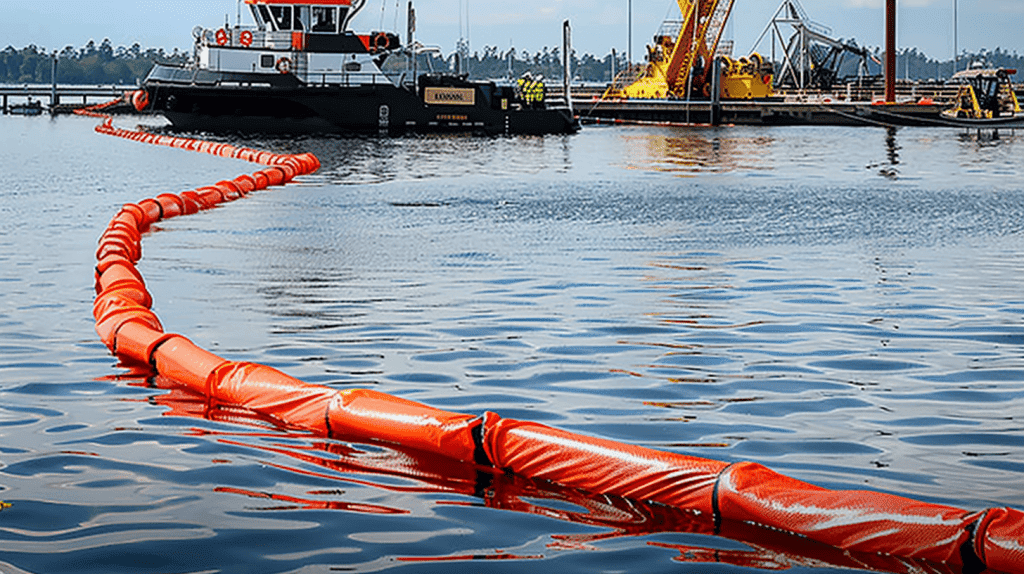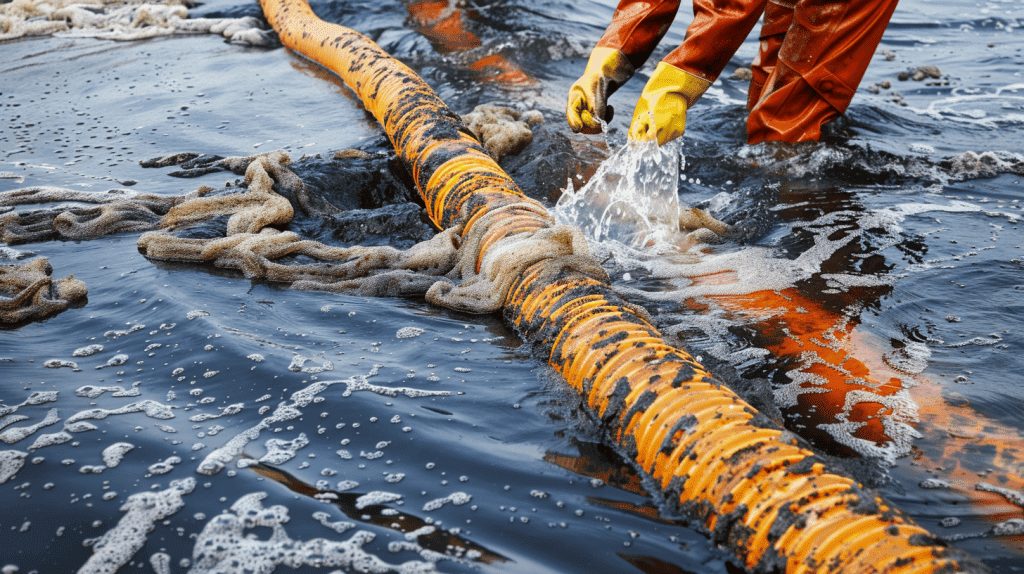Oil spills are disastrous events with severe environmental, economic, and social consequences. In the face of such crises, quick and effective response measures are essential to minimize the damage. One of the most crucial tools in oil spill response is the spill containment boom. This article will explore the importance of spill containment booms, how they work, and their role in oil spill response efforts.
What Are Spill Containment Booms?
Spill containment booms, often referred to simply as “booms,” are floating barriers used to contain oil on the surface of the water. These booms are designed to prevent the spread of oil, making it easier to collect and remove the oil from the water. They come in various sizes and materials, depending on the specific needs of the spill response.

Types of Spill Containment Booms
There are several types of spill containment booms, each suited for different conditions and spill scenarios:
- Absorbent Booms: These booms are made from materials that can absorb oil while repelling water. They are often used for smaller spills in calm waters.
- Inflatable Booms: These booms can be quickly deployed and inflated on-site. They are ideal for large spills and rough water conditions.
- Permanent Booms: These are fixed installations used in areas prone to frequent spills, such as near oil rigs or ports.
How Do Spill Containment Booms Work?
Spill containment booms work by creating a physical barrier that stops the oil from spreading further. Here’s how they function:
- Deployment: The booms are deployed around the spill area, either manually or using specialized equipment.
- Containment: Once in place, the booms float on the water’s surface, with a portion of the boom extending below the waterline. This design traps the oil on the surface, preventing it from spreading.
- Collection: After containment, oil recovery operations can begin. Skimmers, vacuums, and other equipment are used to collect the trapped oil for proper disposal or recycling.
Key Features of Effective Booms
Effective spill containment booms have several key features:
- Durability: They must withstand harsh environmental conditions, including waves, wind, and sunlight.
- Flexibility: They should be able to conform to various water surfaces and spill shapes.
- Visibility: Bright colors are often used to ensure that the booms are easily seen during deployment and recovery operations.
The Role of Spill Containment Booms in Oil Spill Response
Immediate Response
Spill containment booms are often the first line of defense in an oil spill response. Their quick deployment can significantly reduce the spread of oil, limiting the impact on marine life and coastal ecosystems. By containing the oil, booms make it easier for response teams to manage the spill and prevent further contamination.
Protection of Sensitive Areas
One of the most critical roles of spill containment booms is protecting sensitive areas such as beaches, marshlands, and mangroves. These ecosystems are particularly vulnerable to oil spills, and the use of booms can prevent oil from reaching these fragile environments. By keeping the oil contained, booms help preserve biodiversity and protect the livelihoods of communities that depend on these ecosystems.
Enhancing Cleanup Efficiency
Containment booms not only prevent the spread of oil but also enhance the efficiency of cleanup operations. By corralling the oil into a concentrated area, booms make it easier for recovery equipment to collect the oil. This focused approach speeds up the cleanup process and reduces the overall environmental impact.

Challenges and Limitations of Spill Containment Booms
While spill containment booms are invaluable tools in oil spill response, they do have some limitations:
Weather Conditions
Severe weather conditions, such as high winds and rough seas, can compromise the effectiveness of booms. In such situations, the booms may become dislodged or damaged, allowing oil to escape containment. Response teams must carefully monitor weather conditions and adjust their strategies accordingly.
Oil Type and Spill Size
The type of oil and the size of the spill can also impact the effectiveness of containment booms. Light oils may spread quickly and require rapid deployment, while heavy oils may sink or form thick layers that are harder to contain. Additionally, very large spills may exceed the capacity of available booms, necessitating additional response measures.
Maintenance and Disposal
Spill containment booms require regular maintenance to ensure they remain effective. This includes cleaning, repairs, and proper storage. After a spill, used booms must be disposed of or cleaned and decontaminated for future use. Proper disposal is essential to prevent secondary pollution.
Innovations in Spill Containment Boom Technology
Advancements in technology continue to improve the effectiveness of spill containment booms. Some of the latest innovations include:
Smart Booms
Smart booms are equipped with sensors and GPS technology to provide real-time data on their position and the extent of the oil spill. This information helps response teams make informed decisions and optimize their containment strategies.
Biodegradable Booms
Researchers are developing biodegradable booms made from natural materials that can break down over time. These booms offer an environmentally friendly alternative to traditional synthetic materials, reducing the long-term impact of spill response efforts.
Enhanced Absorbent Materials
New absorbent materials are being developed to increase the capacity and efficiency of absorbent booms. These materials can absorb more oil while repelling water, making them highly effective for smaller spills and nearshore applications.
Conclusion
Spill containment booms play a crucial role in oil spill response, providing an essential tool for containing and managing oil spills. By preventing the spread of oil, protecting sensitive areas, and enhancing cleanup efficiency, booms help mitigate the environmental and economic impact of oil spills. While challenges and limitations exist, ongoing innovations in boom technology promise to further improve their effectiveness in future spill response efforts.
In the face of an oil spill, the swift deployment of spill containment booms can make all the difference in minimizing damage and protecting our valuable marine and coastal ecosystems.
Shop at Absorbents Online for Oil Absorbent Booms
When it comes to oil spill response, having access to high-quality spill containment booms is essential. Absorbents Online offers a wide range of oil-absorbent booms designed to meet the rigorous demands of spill containment and recovery operations. Our durable, flexible, and highly visible booms ensure effective and efficient spill management. Visit Absorbents Online today to explore our selection of oil-absorbent booms and equip your response team with the best tools for protecting our environment. Act now to prevent spills from turning into environmental disasters.